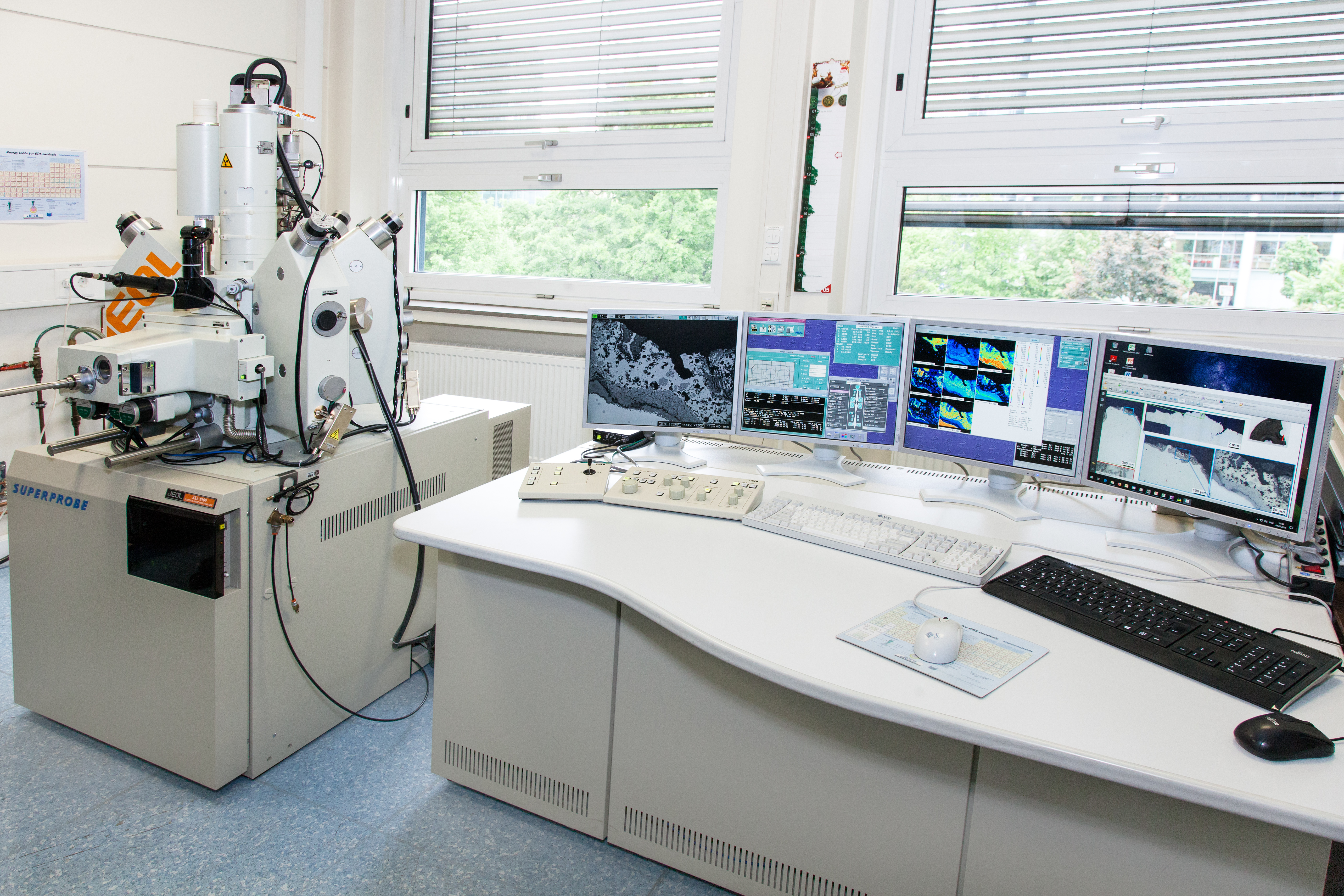Electron Probe Microanalysis (EPMA)
Also known as microprobe or wavelength-dispersive X-ray spectrometry, WDX

Analyzing inhomogeneous solid samples often means studying how different phases are distributed in the material or how reactions at interfaces cause chemical changes. An area-resolved anaysis of element concentations can deliver valuable information to answer these questions. Electron probe microanalysis (EPMA) facilitates the chemical analysis of selected areas with a µm resolution.
The wavelength-dispersive detection of fluorescent X-ray signals (WDX) used in this case features a higher spectral resolution and more accurate quantitative analysis than energy-dispersive X-ray spectrometry (EDX).
The detection limit is different for different elements; usually it is in the range of 0.01-0.1 mass %.
- Measurement principle: An electron beam accelerated from a W cathode and focussed to <1µm hits the sample surface. The sample emits electrons and characteristic fluorescence radiation in the X-ray range. These signals are detected and interpreted.
- Secondary and backscattered electron images display the structure and the element contrast of sample surfaces.
- Qualitative determination of elements contained in a selected spot on the sample surface.
- Area-resolved semiquantitative display of element concentrations in selected regions on the sample surface as distribution maps.
- Quantitative analysis of element concentations at selected spots on the sample surface, also as a sequence of measurement spots (linescan). Results are provided in mass %, optional conversion to atom %.
- Vacuum-stable solid samples with polished surface
- Maximal dimensions 4 cm * 4 cm * 2.5 cm
- Samples are usually embedded in cylinder-shaped polished sections, diameter 2.5 cm, 3 cm, or 4 cm; maximal cylinder height 2.5 cm
- Samples and embedding material must be electrically well conductive; if necessary, their conductivity can be enhanced by carbon coating
- Jeol JXA-8100 with W cathode
- Spectrometers and enclosed crystals:
- XCE with LDE1, TAP
- XCE with LDE2, PET
- XCE with PET, LiF
- H-type with PET, LiF
- H-type with PET, LiF
- Nitrogen cooling finger for reduction of carbon contamination on the sample surface
- Qualitative and semiquantitative:
All elemente with a mass number of minimum 4 (beryllium), except radioactive elements
- Quantitative:
All of the above elements, except noble gases and Br, I, Rb, Cs, Ir, Tl
Interested to Order an Analysis?
If you are interested in using EPMA analysis for your own research questions, we would be happy to hear from you. Please find our contact details in the right column of this website.
